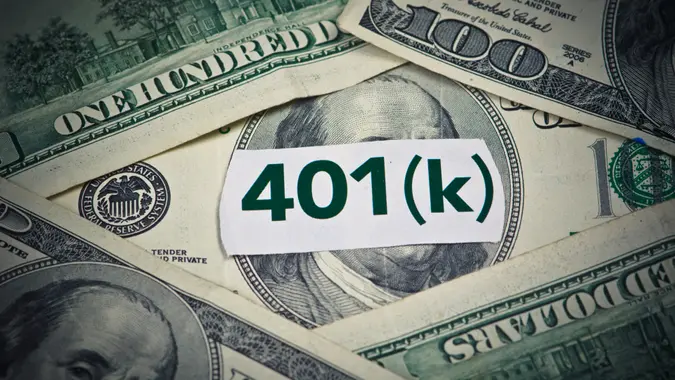Retiring After 2050? Here’s What $4M Looks Like in Monthly Savings

Commitment to Our Readers
GOBankingRates' editorial team is committed to bringing you unbiased reviews and information. We use data-driven methodologies to evaluate financial products and services - our reviews and ratings are not influenced by advertisers. You can read more about our editorial guidelines and our products and services review methodology.

20 Years
Helping You Live Richer

Reviewed
by Experts

Trusted by
Millions of Readers
Previously, GOBankingRates revealed that in order to continue living with an average cost of living of $168,831 per year ($60,000 per year now) you’ll need to retire with $4 million ($1.42 million now). Below, we’re looking at how much you need to be saving every month to do that.
If you need a little less, here’s what $2 million looks like in monthly savings.
You’re Not Saving, You’re Investing
Okay, so before we get started, let’s clear one thing up: you’re not going to save your money every month. You’re going to invest it. The average interest rate on a savings account in 2025 is 0.38% according to U.S. News & World Report.
That’s nothing. Not even inflation.
It means even if you saved $1,000 a month for 10 years, you’d still barely have more than your own $120,000 that you saved. On the market, the earnings are, on average, 12% per year, according to Ramsey Solutions. That’s a historical average that goes back decades.
But let’s be conservative. If you invested that same $1,000 per month for 10 years at the average rate of 12%, you’d have $210,584.82. That’s almost double your original investment. So yes, invest in your company’s 401(k), in an IRA and anywhere else you can earn real interest.
Save Outside of Your 401(k)
Financial expert Julian B. Morris also advises you to save outside of your 401(k).
“A non-retirement account isn’t restricted to the same contribution limits that a 401(k) is. If you’re trying to retire earlier than 59 and a half when you can access your 401(k) or IRA money without penalty, a non-retirement account is the place where you bridge the age gap. Long-term capital gains are currently 0%/15%/20% depending on your income level.”
If your goal is to save $4 million to retire in or after 2050, you’ll want to save more than the max contribution allowable for a 401(k), which is currently $23,500 (per Fidelity) if you’re under the age of 50. You can max out your 401(k) contributions and then contribute to an IRA as well. And beyond that, you can start looking into index funds and other ways to earn interest for your retirement plan.
How Much You Need To Invest
Now, how much, exactly, do you need to invest in order to retire with $4 million by 2050? This article is published in 2025, so that means you have 25 years of investing and earning ahead of you.
To retire exactly at 2050 with exactly $4,000,016, you’ll need to invest $2,500 per month at an interest rate of 12% assuming your base funds right now are 0. If you’re at $100,000 now, you’ll only need to contribute $1,450 a month for 4,020,015 by 2050. Now, this calculation works if you’re currently 40 and plan to retire right at 65.
If you’re younger or plan to retire later, you’ve got more wiggle room. Let’s say you’re either 35 and plan to retire at 65 or you’re 40 and plan to retire at 70. In that case, you’ve got 30 years of investing to look forward to.
For a 30-year plan, you only need to invest $1385 a month starting this year to earn $4,020,015 if you’re starting at 0. If you have $100,000 base now, you only need to contribute $350 a month for $4,009,589 in 30 years. It’s worth noting that this money in 30 years will be less than the money in 20 years due to inflation. But the point is that the more you can accrue interest over time, the more money you’ll make.
For those who are much younger, say 25 years old and you’re hoping to retire at 65, you’ve got 40 years to work with. You can start investing just $435 a month now and you’ll have $4,004,217 by the time you retire. The bottom line: the earlier you start and the longer you can wait, the better.
Invest in Your Health, Too
So start investing in your retirement fund and in your health now. So you can live longer and retire well. Yes, it’s an important point that can’t be missed.
You can save all the money in the world, but if you’re frail and unhealthy, you won’t be able to enjoy your millions. In fact, you may end up spending your millions on healthcare just to keep yourself going.
So take part of your monthly investment money and put it into healthy food, a gym membership and maybe a few yoga classes. Taking care of your health now, alongside your financial investments, means you’ll both live long and prosper.
 Written by
Written by  Edited by
Edited by 

























